1934
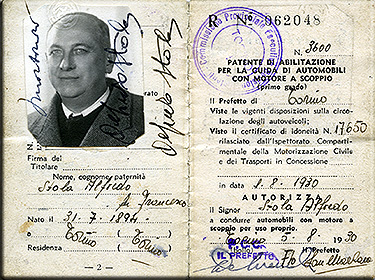 Alfredo Stola's driving licence from 1930.
Alfredo Stola's driving licence from 1930.
In 1934, the works moved a few hundred meters, to Via Issiglio 38, bordering the wall of the large Lancia factory in Via Monginevro. 800 square meters of workshop owned, designed and built under the direction of Alfredo.
It was complete with diverse work areas, cast iron countertops, a column milling machine, accounting support offices and a headcount of around 20 employees.
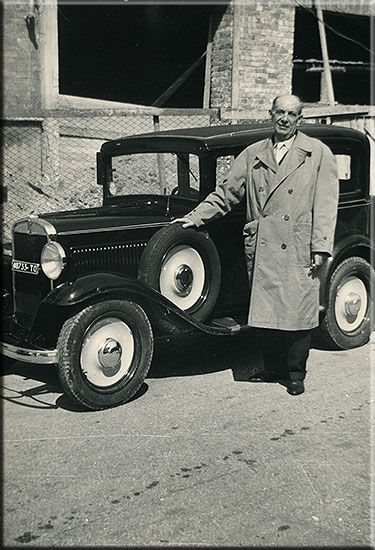 Turin, 1932, via Issiglio 38, Alfredo Stola with his Fiat 514 TO 37145, on the site of his new workshop.For "Stola Modelling", The wall of the Lancia plant in Via Issiglio would become a legend within in the workplace, when Vincenzo Lancia himself, a couple of years later, had a driveway door opened right in front in order to speed up movement between the companies.
Turin, 1932, via Issiglio 38, Alfredo Stola with his Fiat 514 TO 37145, on the site of his new workshop.For "Stola Modelling", The wall of the Lancia plant in Via Issiglio would become a legend within in the workplace, when Vincenzo Lancia himself, a couple of years later, had a driveway door opened right in front in order to speed up movement between the companies.
A saving of almost a kilometer for the movement of the models that, at the time, were pushed by hand on a cart.
With the new gate across the street, it allowed direct access to the Lancia courtyard without having to go through Lancia's goods reception in Via Caraglio.
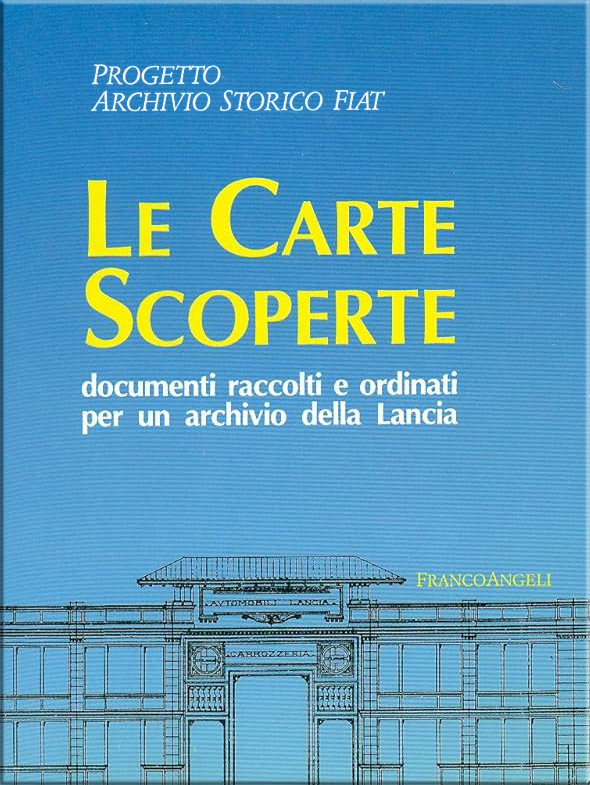 Legend, which in the absence of a photograph is confirmed thanks to research by Luigi De Virgilio, son of the famous Lancia engine engineer who operated between 1939 and 1975).
Legend, which in the absence of a photograph is confirmed thanks to research by Luigi De Virgilio, son of the famous Lancia engine engineer who operated between 1939 and 1975).
On page 130 of the book "Le Carte Scoperte", documents collected and sorted for a Lancia archive, published by Progetto Archivio Fiat, at the beginning of page 130, Antonello Barocci writes: 180/183. ( 3. 4. 1936 / 25. 6. 1936 ) Opening in the Fvi (Industrial vehicle factory) of a driveway entrance on Via Issiglio and subsequent demolition of a section of the building facing the new entrance.
"Aprilia" and "Ardea" were the model names of the period. Alfredo Stola designed the first wooden maquettes for interiors and exteriors on the same buck for these models.
The aim, to understand both style and habitability together, given the unusually daring aerodynamics for the time.
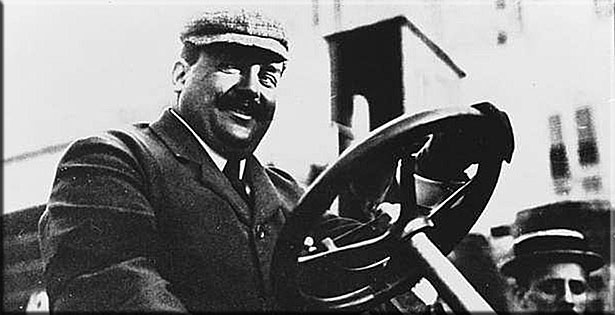 Vincezo Lancia poses in front of his premises in Borgo San Paolo. In 1936 he will open a door driveway in front of the street of Via Issiglio 38 corresponding to the model shop of Alfredo Stola.
Vincezo Lancia poses in front of his premises in Borgo San Paolo. In 1936 he will open a door driveway in front of the street of Via Issiglio 38 corresponding to the model shop of Alfredo Stola.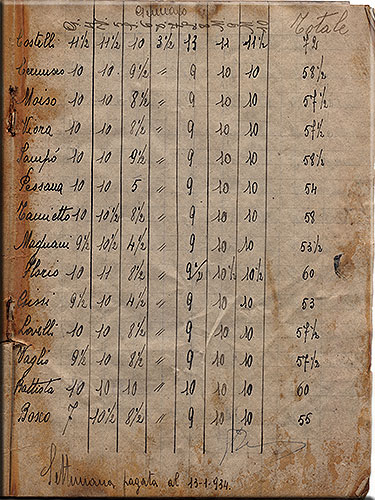 1934 Distinta ore dei 14 dipendenti durante il lavoro della Lancia Aprilia.
1934 Distinta ore dei 14 dipendenti durante il lavoro della Lancia Aprilia.
Vincenzo Lancia, in the search for totally new streamlined forms, found in the laboratory of Alfredo Stola, the ideal partner who also had the capability to create prototype bodywork in both sheet metal and, in the early stages, wood.
Looking at the archive photographs, it is surprising to see how, at the time, car models were built with thin wood, hollow on the inside to make the habitability and ergonomics immediately verifiable.
These are very profitable years for the Italian automotive industry and the "Alfredo Stola" company would soon become a benchmark for its expertise, not only for Lancia but also for the other Italian car manufacturers, such as Fiat, OM, Diatto, Farina, SPA. Lancia.
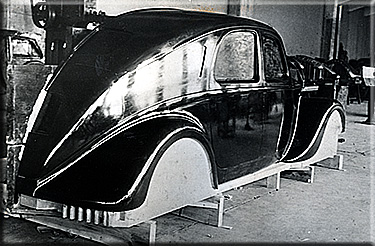 Turin 1934. Interior and exterior wooden models for the Lancia Aprilia
Turin 1934. Interior and exterior wooden models for the Lancia Aprilia
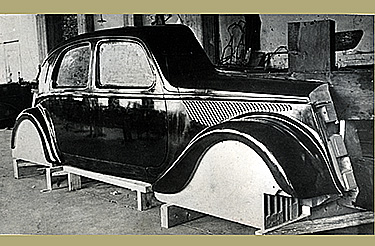 Turin 1934. Interior and exterior wooden models for the Lancia Aprilia In effect it was a half model, with the interior visible from one side Unfortunately there are no photographs, but this was described to Alfredo Stola by his father.
Turin 1934. Interior and exterior wooden models for the Lancia Aprilia In effect it was a half model, with the interior visible from one side Unfortunately there are no photographs, but this was described to Alfredo Stola by his father.
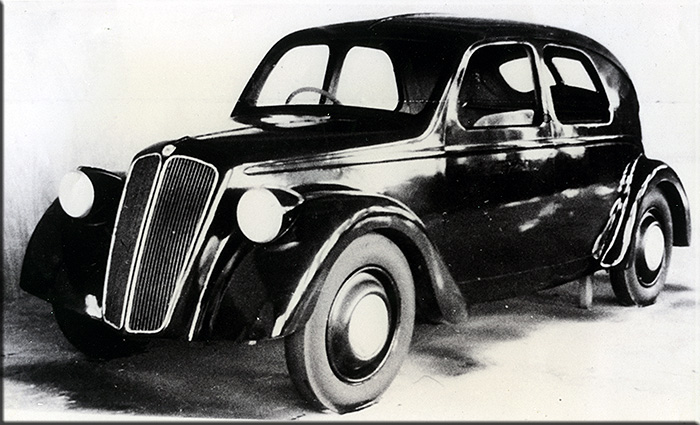 1934, a 1:1 scale model of one of the proposals showing both interior and exterior together It is conceivable that it also had the doors open, as shown by the steering wheel and the window not being completely lowered.
1934, a 1:1 scale model of one of the proposals showing both interior and exterior together It is conceivable that it also had the doors open, as shown by the steering wheel and the window not being completely lowered.
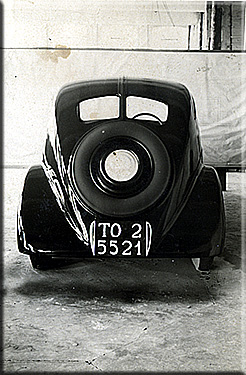 The license plates shown were those of Alfredo Stola's personal Lancia Augusta.
The license plates shown were those of Alfredo Stola's personal Lancia Augusta. 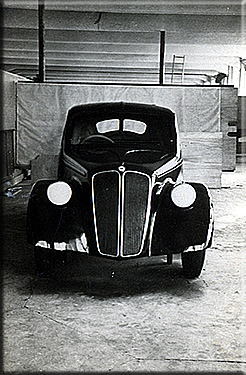 1934, a 1:1 scale model of one of the proposals
1934, a 1:1 scale model of one of the proposals
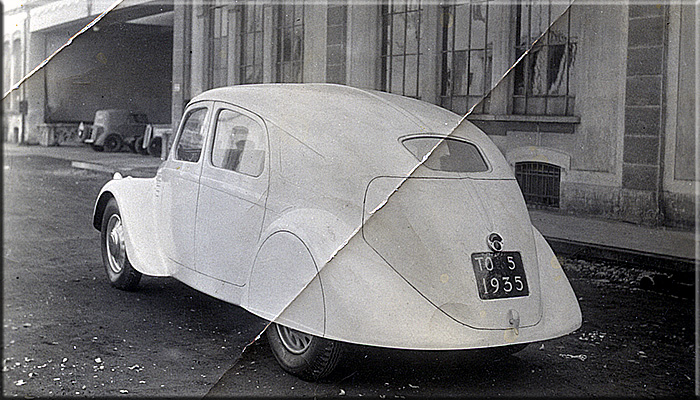 1935,Taken in the courtyard of Lancia,38 via Issiglio, one of numerous aerodynamic prototypes requested by Vincenzo Lancia. From the number plate this appears to be the fifth proposal model of 1935.
1935,Taken in the courtyard of Lancia,38 via Issiglio, one of numerous aerodynamic prototypes requested by Vincenzo Lancia. From the number plate this appears to be the fifth proposal model of 1935.
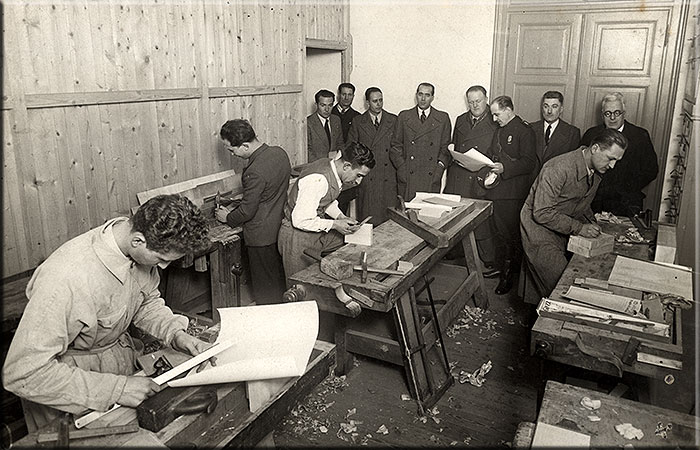 1938, Avogadro Technical Institute of Turin, Giuseppe Stola, the first on the left, at the fourth year practical exam.
1938, Avogadro Technical Institute of Turin, Giuseppe Stola, the first on the left, at the fourth year practical exam.


